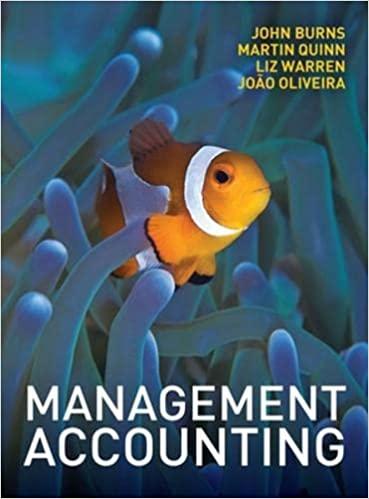Multiple Choice Questions
1. Interest expense in a non-financial institution:
| | is not presented "net of taxes." |
| | appears as a separate category after extraordinary items in the income statement. |
| | appears as a separate category after continuing operations in the income statement. |
| | is part of other income and expense. |
2. The Dunn & Bradstreet reports may be used to obtain:
| | data sorted by assets and sales. |
| | an industry-wide common-size vertical income statement. |
| | compilations of corporate tax return data. |
| | condensed financials and ratios classified by SIC code. |
3. Working capital:
| | is the relationship between profitability and working capital. |
| | is subject to understatement if certain assets are understated. |
| | is the time required to go from cash to inventory to sales and accounts receivable and back to cash. |
4. The debt ratio:
| | excludes short-term liabilities. |
| | excludes noncontrolling shareholders' interests. |
| | includes deferred tax liabilities. |
| | excludes redeemable preferred stock. |
5. Capitalized leases will generally have:
| | no impact on the debt/equity ratio. |
| | greater rent expense on the income statement than operating leases. |
| | equal amounts of assets and liabilities associated with the lease at any point in time. |
| | an asset and a liability reported on the balance sheet. |
6. A ratio that might change substantially if items of other comprehensive income were included is:
7. The Sarbanes-Oxley Act required the SEC to adopt rules concerning pro-forma financial information. One requirement is that the company issuing pro-forma financial information must:
| | reconcile non-GAAP financial measures to GAAP-based financial measures. |
| | conform all pro-forma information to GAAP. |
| | show restructuring costs in pro-forma financial statements. |
| | obtain an opinion from the external auditors that the pro-forma information is "fairly presented." |
8. For computing diluted earnings per share, a potentially dilutive security would be:
| | common stock that has been authorized, but not issued. |
9. The price/earnings ratio:
| | is not a function of the market. |
| | is calculated using diluted earnings per share before nonrecurring items. |
| | indicates low-growth-potential firms have higher price/earnings ratios. |
| | is calculated using basic earnings per share before nonrecurring items. |
10. The purchase of land would be classified in the statement of cash flows as a(n):
| | operating outflow activity. |
| | investing outflow activity. |
| | financing outflow activity. |
11. According to Beaver's univariate model, which one of the following ratios would be the least useful for forecasting financial failure?
12. Free cash flow (FCF) is the projected future stream of free cash flows discounted to present value starting with operating cash flows and:
| | deducting accounts receivable. |
| | adding back outlays for operating capacity. |
| | adding back preferred dividends. |
| | deducting debt repayments. |
13. Assets on the balance sheet of a bank do not include:
| | checking accounts of customers. |
14. Which of the following ratios would be most meaningful to a bank?
| | Equity capital to total assets |
15. Which of the following is an unrealized decrease in net worth?
| | Change in current value of securities |
16. Which of the following relating to not-for-profit accounting for contributions is false?
| | All contributed services should be recognized. |
| | Contributions received should be recognized as revenues in the period received. |
| | Service contributions should be valued at the fair value of services or the resulting increase in assets. |
| | Contributions received should be recognized at their fair values. |






